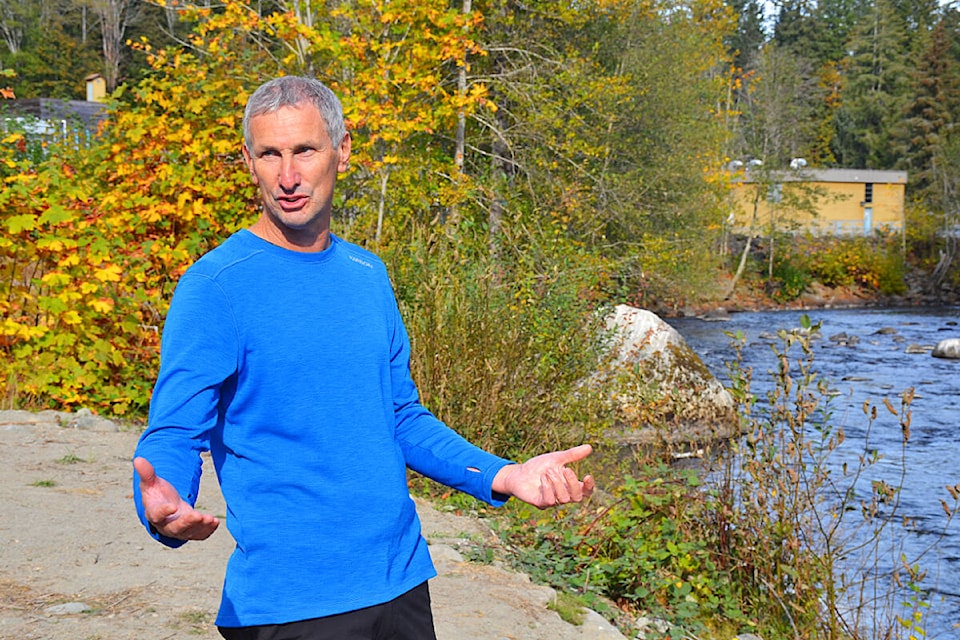Even though there was some rain fell on the Campbell River watershed, BC Hydro’s Stephen Watson says there was little change in the water storage in the lakes above the Quinsam and Campbell Rivers.
After missing last week’s atmospheric river due to the rain shadow effect, Campbell River is entering its 14th month of atypical rainfall.
“Unfortunately it’s raining all around us, but we’re not getting that important rain for the Campbell River watershed,” Watson said. “Thirty or 40 kilometers in one direction or the other can make a big difference in terms of big rain or almost blue skies.”
While Watson was hoping that the rain shadow would not have an effect this time around, that was not the case.
“The rain shadow effect once again, along with some cooler temperatures, mitigated the effects of this latest storm system,” he said. “The cooler temperatures are now looking to set in and the water inflows into the system will be declining.”
However, the lack of rain is not troubling for power generation or municipal supply reasons. The main concern both Watson and Walls have is for the salmon that spawn in the watersheds.
“It’s made it very tough for them,” Walls said. “For the large fish like Chinook and Coho, their migration has been slowed down and delayed… The rain we’ve had in the last 10 days hasn’t really done a lot.”
One of the struggles that comes with late season precipitation is that a lot of it falls as snow in higher elevations, which does not end up flowing through the rivers until the spring thaw.
“It starts to lock up whether it’s snow or or ice. So the runoffs decrease,” Watson said. “It would be great to see these fall storms come and track a bit differently so we can see the benefits, but for now… they’re kind of just missing us.”
“We’re actually struggling to get enough fish for brood stock,” he said about those larger species. “I’m anticipating this kind of change is significantly tomorrow morning,” due to the rain on Thursday, but “we need it not just to rain, we need to see a response in the river.”
To help, Walls and his team have set up a floating fence on the Quinsam to block larger Chinook to collect for brood stock. The fence is a temporary measure that they have used in the past, but at this point the fence has been deployed constantly to get brood stock.
“We probably have about half the number of fish that we need that we’ve collected from the river so far and I’m anticipating that’s going to change really quickly here,” he said. “If it doesn’t we will be having to go and find some Coho of the river next week so we can get our brood stock,” which is not a step the hatchery has taken before.”
Watson said the flows in the Campbell River downstream of the dam are at 65 cubic metres per second, which hasn’t happened in November since 1993. Walls agrees, saying that “it’s been super unusual.”
Though this situation has not occurred in the last 29 years, Walls said there could be some things done to make the system more resilient to an increasingly unpredictable climate.
“It’s in everyone’s interest to provide that water flow if we can,” he said. “If there are some things we can do in the future to make it reliable, I think we definitely need to investigate those… I think DFO would look into it for sure. We have to.”
“There’s no question that these types of weather events make us look at things differently – we learn from them,” Watson said. “We have a Campbell River community liaison committee meeting in early December, and as we do two or three times per year, we will be going over our hydroelectric operations and capital projects.”
RELATED: Pumps mobilized to save Quinsam River salmon habitat
Campbell River has not had an ‘average’ amount of rainfall for over a year
marc.kitteringham@campbellrivermirror.com
Like us on Facebook and follow us on Twitter
